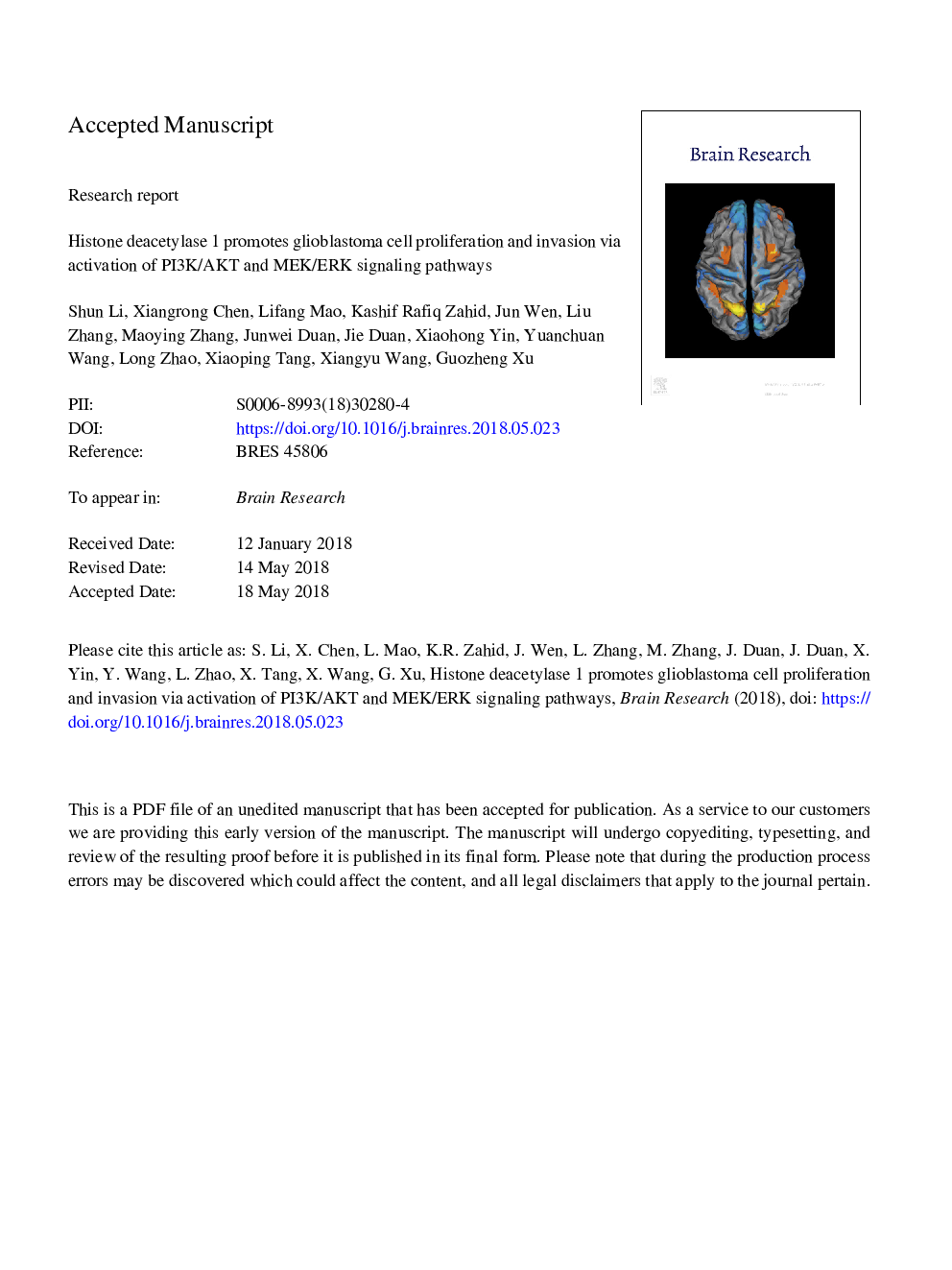| Article ID | Journal | Published Year | Pages | File Type |
|---|---|---|---|---|
| 8839759 | Brain Research | 2018 | 37 Pages |
Abstract
Histone deacetylase 1 (HDAC1) plays a crucial role in cancer progression and development. This enzyme has been confirmed to be a key regulator of tumor biology functions, such as tumor cell proliferation, migration and invasion. However, HDAC1 expression in glioma remains controversial, and its specific function and molecular mechanism in glioblastoma is poorly understood. In this study, our findings demonstrated that protein and mRNA levels of HDAC1 were increased in glioma cell lines and glioma tissues compared to normal glial cell lines and non-neoplastic brain tissues, respectively. Furthermore, HDAC1 knockdown cells displayed decreased proliferation and invasion capabilities, whereas HDAC1 overexpressing glioblastoma cells displayed more proliferation and invasion capabilities in vitro. These novel outcomes suggested that knockdown of HDAC1 possibly suppressed the expression of phosphorylated AKT (p-AKT) and phosphorylated ERK (p-ERK) proteins, while overexpression of HDAC1 significantly increased p-AKT and p-ERK protein in glioblastoma cells. In addition, knockdown of HDAC1 repressed subcutaneous tumor growth in vivo, and led to down-regulation of p-AKT and p-ERK protein in U87 MG xenograft tumors. For the first time, we have demonstrated that HDAC1 promotes proliferation and invasion in glioblastoma cells by activating PI3K/AKT and MEK/ERK signaling pathways in vitro and in vivo. These results suggest that HDAC1 may be a novel biomarker and potential therapeutic target in glioblastoma.
Related Topics
Life Sciences
Neuroscience
Neuroscience (General)
Authors
Shun Li, Xiangrong Chen, Lifang Mao, Kashif Rafiq Zahid, Jun Wen, Liu Zhang, Maoying Zhang, Junwei Duan, Jie Duan, Xiaohong Yin, Yuanchuan Wang, Long Zhao, Xiaoping Tang, Xiangyu Wang, Guozheng Xu,
